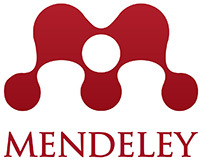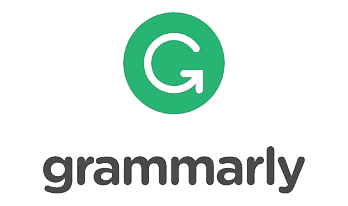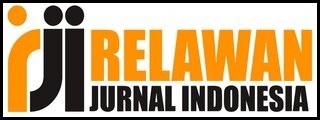What is affecting Muslim to Subscribing Halal Restaurant?
Keywords:
Perception of Muslim customers, Halal Restaurant, Halal LogoAbstract
The purpose of this study is to investigate the perception of Muslim costumers who always subscribing Halal restaurant without any doubt whenever they find Halal logo in restaurant or without it. This research is already finished with supported of SPSS ver.23. 200 respondents were giving the contribution to make this research. The sample section of the research was took by convenience sample as located in Bogor, as well as Muslim Bogor which they already understand about role of Halal in their life. Independent variables have been designed using Halal logo and Advertising. The result shows that despite all the hypothesis testing were investigate significantly, the mediation of consumer’s attitude was significantly mediate them to subscribe Halal restaurant. Which is the Muslim of Bogor were keep the Islam rule as an obligation to always consume permissible food and beverage in guarantee Halal in restaurant.References
Ajzen, I. And Fishbein, M.A. (1980). Understanding Attitudes and Predicting Social Behaviour. Prentice-Hall, Englewood Cliffs, NJ. Bauer, R. A., and Greyser S. A., Advertising in America Consumer View. Boston, MA: Harvard University, 1968.
Bauer, R. A. & Greyser, S. A. (1968) Advertising in America: The consumer view. Unpublished Graduate dissertation, Boston, MA: Harvard University.
Becker, L. B., Martino, R. A. and Towners, W. M. "Media Advertising Credibility." Journalism Quarterly 53, 1976, pp. 216-22.
Brackett, L. K., & Carr, B. N. (2001). Cyberspace advertising vs. other media: Consumer vs. mature student attitudes. Journal of Advertising Research, 41(5), 23–32.
Bonne, K., & Verbeke, W. (2008). “Religious values informing halal meat production and the control and delivery of halal credence quality”. Agriculture and Human Values (2008) 25:35–47
Balderjahn, I. (2002). “Personality variables and environmental attitudes as predictors of ecologically responsible consumption patterns”. Journal of Business Research. Volume 17, Issue 1, August 1988, Pages 51-56
Dali, N., Nooh, M., Nawai. Et al. (2007). “Is Halal Products are More Expensive as Perceived by the Consumers? Muslimpreneurs Challenges and Opportunities in Establishing a Blue Ocean Playing Field”. Journal of Management and Muamalah. Vol. 2. Pp:39-
Ducoffe, R. H. (1995). How consumers assess the value of advertising. Journal of Current Issues & Research in Advertising, 17(1), 1-18.
http://dx.doi.org/10.1080/10641734.1995.10505022
Eagly, A.H. and Chaiken, S. (1993), The Psychology of Attitudes, Harcourt Brace College Publishers, Orlando, FL. European Union (2016). “The Food and Beverage Market Entry Handbook: Indonesia”. European Commission Consumers, Health, Agriculture and Food Executive Agency Promotion of Agricultural Products Unit
Firman, J. (2010).” Consumer Attitudes Toward Mobile Advertising”. Department of Marketing and management. Aalti University. pp.111.
Fernandez, K. V. and Rosen, D. L (2000). “The effectiveness of information and color in yellow pages advertising”, Journal of Advertising (29:2), 2000, pp. 61-73.
Hayati @ Habibah Abdul Talib, Khairul Anuar Mohd Ali & Khairur Rijal Jamaludin, ‘Quality Assurance in Halal Food Manufacturing in Malaysia: A Preliminary Study’,
Proceedings of International Conference on Mechanical & Manufacturing Engineering (ICME2008), 21– 23 May 2008.
Hines, J. M., Hungerford, H. R., & Tomera, A. N. (1987). Analysis and Synthesis of Research on Responsible Environmental Behavior: A Meta-Analysis. Journal of Environmental Education, 18, 1-8. https://doi.org/10.1080/00958964.1987.9943482
Khan, Mohd. I. and Haleem, A. (2016). “Understanding “Halal” and “Halal Certification & Accreditation System”- A Brief Review”. Saudi J. Bus. Manag. Stud.; Vol-1, Iss1(Feb-Apr, 2016):32-42.
Lohse, G. L. and Rosen, D. ignaling Quality and Credibility in Yellow Pages Advertising: The Influence of Color and Graphics on Choice, Journal of Advertising (30:2), 2001, pp. 73-85.
Larkin, E. F. (1979)."Consumer Perceptions of the Media and Their Advertising Content." Journal of Advertising (8:2), 1979, pp.5-7.
Larkin, E. F. (1979)."Consumer Perceptions of the Media and Their Advertising Content." Journal of Advertising (8:2), 1979, pp.5-7.
Krejcie, R. & Morgan, D. (1970). “Determining Sample Size for Research Activities Robert”. Educational and Psychological Measurement. Vol. 38., Issue: 1., Pp:607-610.
Mohd Imran Khan & Abid Haleem., (2016). “Understanding “Halal” and “Halal Certification & Accreditation System”- A Brief Review”. Saudi Journal of Business and Management Studies. Vol-1, Iss-1(Feb-Apr, 2016):32-42.
Nunnally J, Bernstein L. (1994) “Psychometric theory.” New York: McGraw-Hill Higher, INC; 1994
Stanley, R., & Pedrosa, F. (2011). “Managing Steam Quality in food and Baverage Proceesing”. Hygenic Design of Food Factories. Woohead Publishing, 2011. Pp-557.
Kearney, J. (2010). “Food Consumption Trends and Drivers”. Phil. Trans. R. Soc. B (2010) 365, 2793–2807.
UKTI Digital. (2013). “Prosedur Sertifikasi Halal MUI”. 2018-01-22 10:01:10.
Prasad (2012). “A Study of Consumers’ Retail Format Choice & Patronage Behaviour in Food & Grocery Retailing (With Special Reference to Neighbourhood Kirana Stores and Supermarkets in Twin Cities of Hyderabad & Secunderabad).” Pp 294-313.
Salamadian. (2017) “ 10 Sampling technique and explanations”
Yoo & Naeyon. 2014. Predicting consumer attitude and patronage intention toward fast fashion retailers: an illustration from U.S. college students. Retrieved from the University of Minnesota Digital Conservancyhttp://hdl.handle.net/ 11299/169381.
Downloads
Published
How to Cite
Issue
Section
License
Copyright (c) 2021 Jurnal Orientasi Bisnis dan Entrepreneurship (JOBS)

This work is licensed under a Creative Commons Attribution-ShareAlike 4.0 International License.

This work is licensed under a CC Attribution-ShareAlike 4.0

 Andika Nuraga Budiman
Andika Nuraga Budiman
 Fakultas Ekonomi dan Bisnis, Universitas YARSI
Fakultas Ekonomi dan Bisnis, Universitas YARSI








